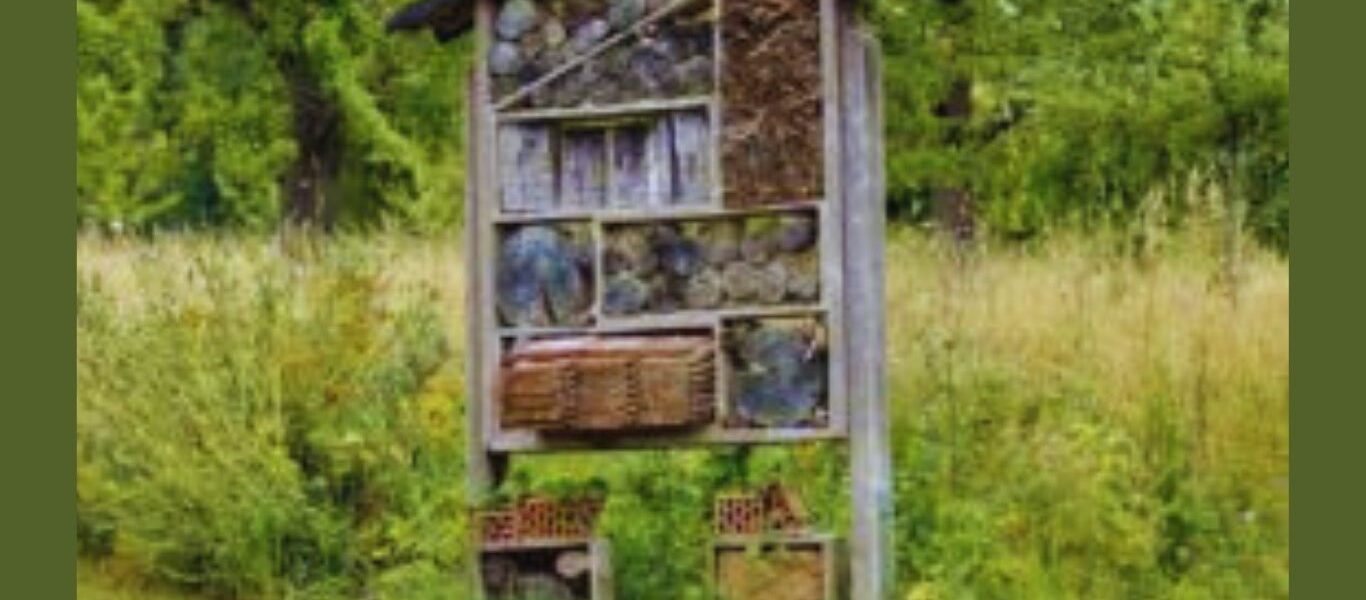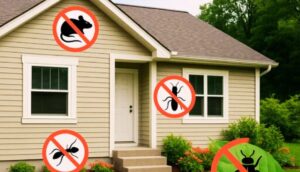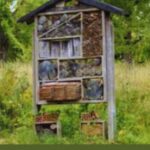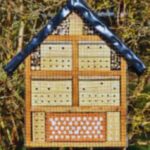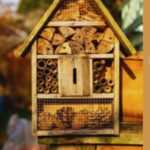Where To Place A Bug Hotel: The Complete Guide for a Buzzing Backyard

If you’ve bought or built a bug hotel, you’re probably excited to welcome new guests into your garden. But here’s the catch—where you place it can make all the difference between a thriving insect community and an empty wooden box.
The right location can help pollinators, beneficial beetles, and other garden-friendly insects feel safe, warm, and at home. The wrong spot? Well, your bug hotel might stay as quiet as a library at midnight.
Let’s explore exactly where to place a bug hotel so it becomes the five-star insect resort your garden deserves.
Why Bug Hotel Placement Matters
Think of a bug hotel like a real hotel. Even the fanciest building won’t get visitors if it’s in the wrong neighborhood. Insects are sensitive to light, moisture, wind, and nearby plants. These tiny details influence whether they’ll move in.
When your bug hotel is placed correctly, it can:
-
Attract pollinators like bees and butterflies.
-
Give shelter to beneficial predators such as ladybugs and lacewings.
-
Help control pests naturally.
-
Support biodiversity in your garden.
Step 1: Choose the Right Sunlight Exposure
Most beneficial insects love warmth. Place your bug hotel facing south or southeast so it catches the morning sun. This helps dry out morning dew and keeps insects warm and active.
Avoid placing it in full shade all day. Cold, damp conditions can make it unappealing—or even harmful—for your insect guests.
Pro tip: If your climate is extremely hot, add partial shade in the afternoon to prevent overheating.
Step 2: Avoid Strong Winds
Insects prefer calm, sheltered spots. Strong winds can drive them away and dry out nesting materials too quickly.
Look for a natural windbreak like:

-
A fence
-
A hedge
-
A wall
-
Dense shrubs
The goal is to create a microclimate where insects can rest without getting blown about.
Step 3: Keep It Close to Food Sources
No one books a hotel far from restaurants—and bugs feel the same. Your insect guests need food close by.
For pollinators: Place your bug hotel near nectar-rich flowers such as lavender, sunflowers, or wildflowers.
For pest-controlling insects: Keep it near plants that tend to get aphids or mites. This makes it easier for ladybugs and lacewings to find their meals.
Step 4: Ensure Year-Round Shelter
Bug hotels aren’t just for summer. Many insects use them to hibernate through winter. That means your location should be safe year-round.
Avoid placing your bug hotel where it will flood in heavy rain. Keep it off the ground using a post, wall mount, or sturdy stand.
Step 5: Keep It Safe from Predators
Birds, frogs, and even some small mammals might see your bug hotel as a snack bar. You can protect it by:
-
Placing it at least 3 feet above the ground.
-
Adding a mesh front (with holes big enough for insects but too small for birds).
-
Keeping it away from heavy foot traffic.
Step 6: Make It Accessible for Maintenance
Bug hotels need a little upkeep—cleaning out old materials every year or replacing damaged sections. Place it somewhere you can reach easily without trampling your garden.
Step 7: Blend It with Nature
A bug hotel works best when it feels like part of the environment. Surround it with plants, herbs, or shrubs. This creates a welcoming habitat and encourages more visitors.
Common Mistakes to Avoid When Placing a Bug Hotel
Even with the best intentions, some placements can fail. Watch out for these pitfalls:

-
Too much shade – insects get cold and damp.
-
Too exposed – strong winds and no protection.
-
Isolated location – far from flowers or plants.
-
On the ground – risk of flooding or predators.
-
Facing the wrong direction – missing out on morning warmth.
The Best Locations for Different Types of Bugs
Not all insects have the same preferences. Here’s a quick breakdown:
| Bug Type | Ideal Location | Notes |
|---|---|---|
| Solitary Bees | South-facing wall, sunny spot | Needs nearby flowers |
| Ladybugs | Near aphid-prone plants | Likes shelter from wind |
| Lacewings | Near vegetable gardens | Helps control pests |
| Beetles | Low but dry areas | Prefers shaded wood piles nearby |
| Butterflies | Sheltered sunny spots | Needs nectar plants close |
Seasonal Considerations
Spring & Summer
This is the busiest time. Make sure your bug hotel gets sunlight and is near blooming plants.
Autumn
As flowers fade, insects begin looking for winter shelter. Keep your hotel dry and safe.
Winter
Many bugs hibernate. Avoid disturbing your hotel during this time, and check for signs of life in spring.
Encouraging More Guests
If you want an active and lively bug hotel, placement is just one of the steps. These are also needed.
-
Plant a mix of native flowers.
-
Avoid pesticides near the hotel.
-
Keep a water source nearby.
-
Add varied nesting materials like bamboo, wood, and pinecones.
10 Frequently Asked Questions About Bug Hotel Placement

1. Where should I put my bug hotel for maximum activity?
Place it facing south or southeast, in a sunny, sheltered spot, close to plants that provide nectar or host garden pests.
2. Can I put a bug hotel in the shade?
You can, but it’s less effective. Most beneficial insects prefer warmth, so a shaded bug hotel may stay empty.
3. How high should a bug hotel be from the ground level?
At least 3 feet high is ideal to protect from predators and flooding.
4. Can a bug hotel be attached to a tree?
Yes, as long as it’s in a sunny position and secure from wind.
5. Is it okay to move a bug hotel once it’s placed?
You should not move a bug hotel during active seasons. If you must move it, do so in late winter or early spring.
6. Should I place more than one bug hotel in my garden?
Absolutely! Multiple hotels in different locations can attract more species.
7. Is it wise to put a bug hotel on a balcony?
Yes—just ensure it gets sunlight, is sheltered from wind, and is near potted flowers.
8. Do bug hotels work in the city?
Yes. Even urban gardens and balconies can host pollinators and beneficial insects.
9. What if my bug hotel stays empty?
Check placement: ensure it’s sunny, sheltered, and close to food sources. Also, give it time—sometimes insects take a season to move in.
10. Should I face my bug hotel in a specific direction?
Yes. South or southeast is best to capture the morning sun and warmth.
Conclusion: A Bug Hotel That’s Always Fully Booked
Placing a bug hotel isn’t just about picking a random spot in your yard. It’s about creating the perfect balance of sunlight, shelter, food access, and safety. By following these placement tips, you give beneficial insects every reason to check in—and stay.
A well-placed bug hotel doesn’t just help insects; it helps your garden thrive naturally. You’ll enjoy more pollination, fewer pests, and the joy of knowing you’re supporting biodiversity.
So grab your bug hotel, find that sunny, sheltered corner, and get ready to welcome your new tiny neighbors. Your garden will thank you, and so will the bugs.

